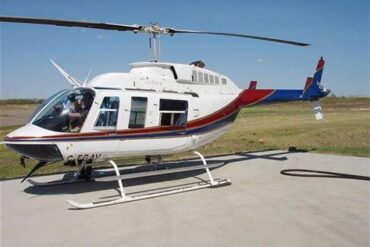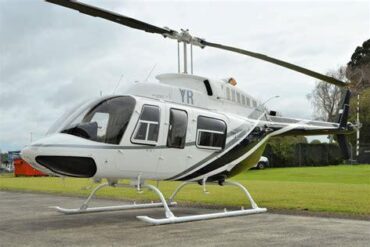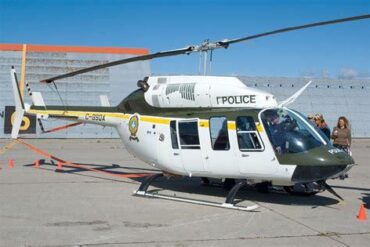The Bell 222UT is a versatile and high-performance helicopter known for its reliability and efficiency. Understanding the price and operating costs associated with the Bell 222UT is crucial for potential buyers and operators. This article provides a comprehensive overview of these costs, ensuring that stakeholders have all the necessary information to make informed decisions.
Overview of the Bell 222UT
The Bell 222UT is a twin-engine helicopter that boasts a spacious cabin, advanced avionics, and exceptional flight performance. Developed for various missions, including corporate transport, medical evacuation, and law enforcement, the 222UT stands out in the light twin helicopter category. Its cruising speed of approximately 150 knots and a range of around 450 nautical miles make it an appealing choice for various applications.
Key Specifications
-
Length: 44 ft 8 in (13.61 m)
-
Height: 12 ft 10 in (3.91 m)
-
Max Takeoff Weight: 4,750 lbs (2,150 kg)
-
Engines: 2 × Rolls-Royce 250-C20R turboshaft engines
-
Horsepower: 420 shp each
Purchase Price of the Bell 222UT
When considering the purchase price of a Bell 222UT, various factors come into play, including the helicopter’s condition, age, and any additional features or modifications. As of 2024, the market price for a used Bell 222UT typically ranges from $1.5 million to $2.5 million. Here’s a breakdown of what influences the pricing:
Factors Influencing Purchase Price
-
Aircraft Condition: Newer models with low flight hours command higher prices compared to older, high-hour units.
-
Maintenance History: A well-documented maintenance history enhances value, indicating reliability and care.
-
Upgrades and Modifications: Features such as enhanced avionics, noise-reduction technologies, and interior upgrades can increase the price.
-
Market Demand: Fluctuations in the aviation market can impact pricing, especially in times of high demand for light twin helicopters.
Operating Costs of the Bell 222UT
Operating costs encompass various aspects, including fuel, maintenance, insurance, and pilot salaries. Understanding these costs is essential for budgeting and financial planning. Below is a detailed examination of the primary operating costs associated with the Bell 222UT.
1. Fuel Costs
The Bell 222UT has a fuel consumption rate of approximately 40-45 gallons per hour (GPH). Considering current aviation fuel prices, which average around $5.00 per gallon, the fuel cost per hour of operation can be estimated as follows:
- Fuel Cost per Hour:
| Consumption (GPH) | Price per Gallon | Total Cost per Hour |
|---|---|---|
| 40 GPH | $5.00 | $200 |
| 45 GPH | $5.00 | $225 |
Thus, operators can expect to pay between $200 and $225 in fuel costs for each hour of flight.
2. Maintenance Costs
Maintenance is a crucial aspect of operating any helicopter, and the Bell 222UT is no exception. Annual maintenance costs can vary significantly depending on usage and age. However, typical annual maintenance costs for the Bell 222UT can range from $100,000 to $150,000. Here’s a breakdown of common maintenance expenses:
-
Routine Inspections: Scheduled inspections are mandated by aviation authorities, generally occurring every 100, 300, and 600 hours.
-
Parts Replacement: Components such as rotor blades, engines, and avionics may require replacement or refurbishment over time, adding to maintenance costs.
-
Labor Costs: Skilled technicians must perform inspections and repairs, contributing to the overall maintenance expenditure.
3. Insurance Costs
Insurance is a vital consideration for helicopter operators. The cost of insurance for the Bell 222UT typically ranges from $20,000 to $50,000 annually, influenced by factors such as:
-
Pilot Experience: Insurance premiums are generally lower for pilots with extensive flight hours and experience in the Bell 222UT.
-
Operational Use: The intended use of the helicopter (commercial vs. private) affects insurance costs.
-
Coverage Limits: Higher coverage limits or specialized policies can lead to increased premiums.
4. Pilot Salaries
Hiring qualified pilots is essential for safe and efficient operations. Salaries for Bell 222UT pilots can vary based on experience and the nature of the operation. On average, pilot salaries can range from $75,000 to $120,000 per year, depending on factors like:
-
Experience Level: More experienced pilots command higher salaries.
-
Location: Salaries may vary by region, reflecting local demand for helicopter pilots.
Total Operating Cost Estimation
To provide a clearer understanding of the total operating costs associated with the Bell 222UT, we can summarize the expected costs per flight hour and annual expenses:
| Cost Category | Cost per Hour | Annual Cost (Approx.) |
|---|---|---|
| Fuel | $200 – $225 | $24,000 – $27,000 |
| Maintenance | – | $100,000 – $150,000 |
| Insurance | – | $20,000 – $50,000 |
| Pilot Salary | – | $75,000 – $120,000 |
| Total Operating Cost | $200 – $225 | $219,000 – $347,000 |
Depreciation Costs
Depreciation is an important financial consideration when owning an aircraft. The Bell 222UT typically depreciates at a rate of about 5-10% per year, depending on market conditions and aircraft usage. Understanding depreciation can help owners gauge their long-term investment’s value.
Factors Affecting Depreciation
-
Market Demand: High demand can slow depreciation, while oversupply can accelerate it.
-
Aircraft Condition: Well-maintained helicopters retain value better than those with significant wear and tear.
-
Technological Advancements: Newer aircraft models with advanced features can diminish the resale value of older models.
Conclusion
In summary, the Bell 222UT is a high-performance helicopter with a price range of $1.5 million to $2.5 million for purchasing a used unit. Operating costs, including fuel, maintenance, insurance, and pilot salaries, can amount to between $219,000 and $347,000 annually, depending on various factors. Understanding these costs is essential for potential buyers and operators, ensuring they can make informed decisions about their investments. The Bell 222UT’s reliability, performance, and versatility continue to make it a popular choice in the aviation industry.


















